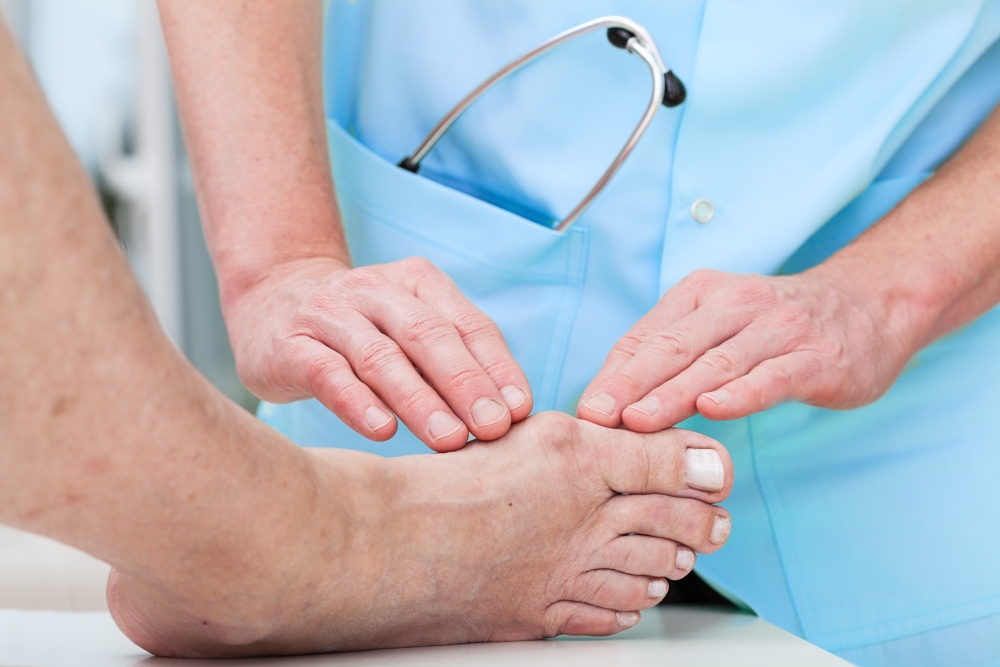Bunions are a common, but potentially serious and unpleasant problem. What is a bunion, how do you know if you have one, and what do you do about it if you do? Read on as we explain the ins and outs of bunions.
What is a Bunion?
A bunion is a deformation of the foot where the bone of your big toe pushes inward toward the other toes, creating a bump on the outside of the foot. This bump is created by the separation of the toe bone and first metatarsal.

This misalignment can be symptom-free or can gradually degrade into a painful, debilitating condition.
How Do I Know If I Have A Bunion?
Looking at the base of your big toe, does it have a bump or outwardly pointed spot? Does your big toe lean in towards the smaller toes, even crossing over other toes?
Does your toe ache, and occasionally have shooting pains throughout your foot, originating at the toe? Does the toe feel tight, sore, or painful when you move it? All of these signs point to a bunion.
What Causes A Bunion in The First Place?
In many cases, the shape of your foot is a pre-determining factor. Genetics can play a major part in whether you are more predisposed to developing bunions or not.
As with many other painful foot problems, improperly fitted or poorly shaped footwear – including high heels, pointed toes, or a too-small toe box – can cause or exacerbate a bunion problem. Some inflammatory medical conditions, like rheumatoid arthritis, can also lead to bunion trouble.

What Can I Do To Prevent Bunions?
The main thing that you can do to prevent bunions is simple; wear comfortable shoes with a wide toe box (plenty of room for the toes to move around) that are flexible and have good arch support. Of course, there isn’t much you can do about genetic predisposition – sorry to tell you that if your family tends toward bunions, you’re more likely to develop them.
How Can I Treat My Bunions At Home?
Just as with prevention, treatment starts with always wearing properly fitted, supportive footwear. Using silicone or moleskin pads inside shoes to cushion the bunion can reduce friction on the bump and relieve some pain and swelling.
Taking pain relievers like naproxen or ibuprofen and icing the bunion area after being on your feet for a long time can help with swelling and pain. Reduce the amount of walking, standing, and heavy exercise that you do and be aware of anything that may put additional pressure on your feet.
What If My Bunions Are Painful and Home Treatment Isn’t Helping?
If your bunion pain is preventing you from living your life normally – say, for example, that you can’t walk more than a block without extreme pain and the big toe is constantly inflamed despite medications and ice therapies. If you’re plagued by persistent pain and swelling, and supportive shoes and other home treatments are just not giving you relief, it may be time to consider surgical correction.

Bunion surgery can mean anything from shaving the bone down to minimize the bump to cutting the bone and placing screws and plates to align the bone correctly and many various procedures in between.
If your bunions are causing you to modify your daily activities and have you in constant pain, it’s time to discuss your options with an experiences podiatrist. Contact the Foot and Ankle Group for an appointment today!
Categorized in: Blog